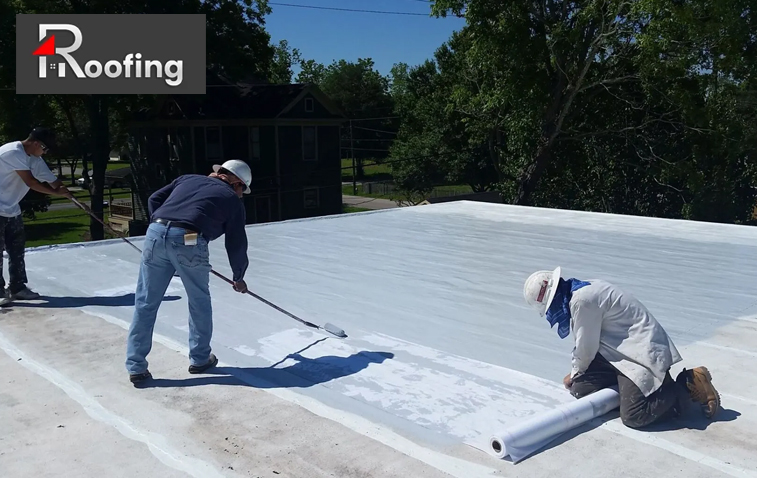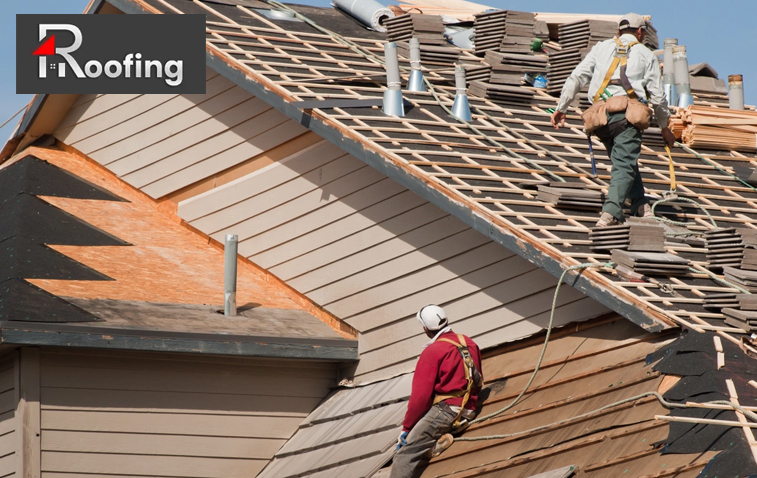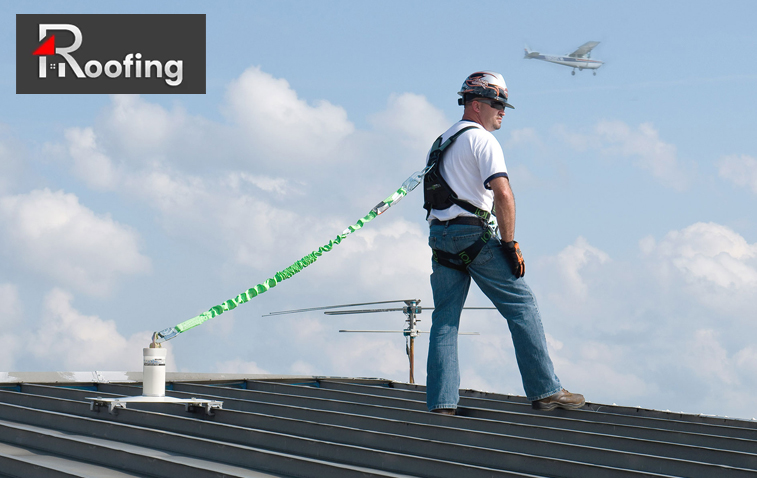Get Ready: 8 Steps to Prepare for a Commercial Roof Replacement
The roof of a commercial building is more than just a protective covering; it’s a critical investment in the longevity and functionality of the entire structure. As time passes and environmental factors take their toll, even the most robust commercial roofs eventually require replacement. A commercial roof replacement project demands meticulous planning and preparation to ensure minimal disruption to business operations and maximum efficiency in execution. A well-prepared roof replacement project not only safeguards the building and its contents but also contributes to improved energy efficiency and potentially lower insurance premiums.

By taking proactive steps to prepare for this major renovation, business owners and property managers can mitigate risks, streamline the process, and set the stage for a successful outcome. The following guide outlines eight essential steps to prepare for a commercial roof replacement, providing a roadmap for navigating this complex but necessary project with confidence and foresight.
1. Conduct a Comprehensive Roof Assessment
The first step in commercial roof replacement preparation is to conduct a thorough assessment of the current roof’s condition. This evaluation will provide crucial information to guide the replacement process and help identify any underlying issues that need to be addressed.
Key Components of a Roof Assessment:
- Structural Integrity: Examine the roof deck, support structures, and any visible signs of sagging or weakness.
- Moisture Detection: Use specialized equipment to identify areas of trapped moisture within the roofing system.
- Drainage Systems: Evaluate the effectiveness of existing drainage, including gutters, downspouts, and internal drains.
- Rooftop Equipment: Assess the condition and placement of HVAC units, vents, skylights, and other rooftop installations.
- Previous Repairs: Document any past repairs or modifications to understand the roof’s history.
- Energy Efficiency: Analyze the current roof’s insulation and reflective properties.
Consider engaging a professional roofing consultant or engineer to conduct this assessment, as they can provide an unbiased, expert evaluation of your roof’s condition.
2. Develop a Detailed Project Plan
Armed with the information from your roof assessment, the next step is to develop a comprehensive project plan. This plan will serve as your roadmap throughout the replacement process, helping to ensure that all aspects of the project are considered and coordinated.
Elements of an Effective Project Plan:
- Scope of Work: Clearly define what the project will entail, including any necessary repairs to the underlying structure.
- Timeline: Establish a realistic schedule for each phase of the project, factoring in potential weather delays.
- Material Selection: Choose appropriate roofing materials based on your building’s needs, climate, and long-term goals.
- Budget Allocation: Break down the budget for materials, labor, permits, and contingencies.
- Sustainability Goals: Incorporate any desired green building practices or energy-efficient features.
- Safety Protocols: Outline safety measures to protect workers, building occupants, and property during the project.
- Business Continuity Strategies: Plan for maintaining operations during the replacement process.
- Waste Management: Develop a strategy for responsible disposal or recycling of old roofing materials.
A well-crafted project plan will help minimize surprises, control costs, and keep the replacement process on track.
3. Secure Necessary Permits and Approvals
Before any work can begin, it’s crucial to obtain all required permits and approvals. This step ensures that your roof replacement project complies with local building codes and regulations.
Steps to Secure Permits and Approvals:
- Research Local Requirements: Familiarize yourself with the specific permits needed in your area for commercial roof replacements.
- Prepare Documentation: Gather all necessary documents, including:
- Detailed project plans
- Structural calculations
- Energy compliance forms
- Site plans
- Submit Applications: File permit applications with the appropriate local authorities, such as the building department or planning commission.
- Schedule Inspections: Arrange for any required pre-project inspections by local officials.
- Obtain Variances: If your project requires any exceptions to current building codes, apply for variances well in advance.
- Secure Insurance Certificates: Ensure that all contractors involved have up-to-date insurance coverage and obtain certificates.
Remember that the permitting process can take time, so start this step early in your preparation to avoid delays in your project timeline.
4. Prepare the Building and Occupants
Proper preparation of the building and its occupants is essential to minimize inconvenience and ensure safety during a commercial roof replacement, which can be disruptive to daily operations.
Building Preparation:
- Protect Interior Spaces: Cover or relocate sensitive equipment, documents, and furnishings that could be affected by dust or debris.
- Secure Exterior Areas: Clear parking areas and walkways that will be used for equipment or material staging.
- Reinforce Ceilings: If necessary, install temporary support or covering to protect ceilings from potential damage.
- Adjust HVAC Systems: Prepare to shut down or modify HVAC operations during the project to prevent dust and fumes from entering the building.
- Enhance Security: Implement additional security measures to protect the building during the vulnerable construction period.
Occupant Communication and Preparation:
- Inform All Stakeholders: Provide detailed information about the project timeline, expected disruptions, and safety protocols to employees, tenants, and regular visitors.
- Establish Clear Signage: Post signs indicating restricted areas, alternative entrances, and safety warnings.
- Create a Communication Plan: Set up a system for providing regular updates and addressing concerns throughout the project.
- Offer Flexibility: Consider allowing remote work options or flexible hours for employees during the most disruptive phases of the project.
- Conduct Safety Briefings: Hold meetings to educate building occupants about potential hazards and emergency procedures during the construction.
Thorough preparation and clear communication will help maintain safety, productivity, and positive morale during the roof replacement process.

5. Coordinate with Rooftop Equipment Specialists
Many commercial buildings have various equipment installed on the roof, such as HVAC units, satellite dishes, or solar panels. Coordinating with specialists for these systems is crucial for a smooth roof replacement.
Steps for Equipment Coordination:
- Inventory Rooftop Systems: Create a comprehensive list of all equipment on the roof, including specifications and service requirements.
- Contact Equipment Specialists: Reach out to the appropriate technicians or companies responsible for each piece of equipment.
- Schedule Assessments: Arrange for specialists to evaluate their equipment and determine if relocation, protection, or upgrades are necessary during the roof replacement.
- Plan for Disconnection and Reconnection: Coordinate the timing for disconnecting equipment before the roof work begins and reconnecting it afterwards.
- Consider Upgrades: Evaluate whether it’s beneficial to upgrade any equipment while the roof is being replaced, potentially improving energy efficiency or performance.
- Ensure Proper Reinstallation: Work with specialists to ensure that equipment is reinstalled correctly, with appropriate flashing and sealing to maintain the integrity of the new roof.
6. Establish a Waste Management Strategy
A commercial roof replacement generates a significant amount of waste material. Developing a comprehensive waste management strategy is essential for environmental responsibility and project efficiency.
Key Components of a Waste Management Strategy:
- Waste Audit: Conduct an audit to estimate the types and quantities of waste that will be generated.
- Recycling Opportunities: Identify materials that can be recycled, such as metal flashing or certain types of insulation.
- Disposal Methods: Determine appropriate disposal methods for non-recyclable materials, ensuring compliance with local regulations.
- On-Site Sorting: Plan for on-site separation of different waste types to facilitate recycling and proper disposal.
- Container Placement: Strategically locate dumpsters or containers to minimize disruption to building operations and ensure easy access for waste removal.
- Hazardous Materials Handling: Develop specific protocols for safely handling and disposing of any hazardous materials encountered, such as asbestos.
Consider partnering with a waste management company specializing in construction waste to optimize your strategy and potentially achieve zero-waste goals.
7. Implement Safety Measures and Protocols
Safety should be a top priority throughout the roof replacement process. Implementing comprehensive safety measures protects workers, building occupants, and property.
Essential Safety Measures:
- Fall Protection: Install guardrails, safety nets, or personal fall arrest systems as appropriate for the roof type and work being performed.
- Access Control: Restrict roof access to authorized personnel only, using clear signage and physical barriers.
- Fire Safety: Establish fire prevention protocols, especially when using heat-based application methods for roofing materials.
- Equipment Safety: Ensure all tools and machinery are in good working condition and operated by trained personnel.
- Personal Protective Equipment (PPE): Require appropriate PPE for all workers, including hard hats, safety glasses, and non-slip footwear.
- Weather Monitoring: Implement a system for monitoring weather conditions and halting work when necessary for safety.
- Emergency Procedures: Develop and communicate clear emergency response plans for various scenarios.
Prioritizing safety not only protects individuals but also helps prevent costly accidents and project delays.

8. Document the Process and Prepare for Handover
The final step in preparing for a commercial roof replacement is to establish systems for documenting the entire process and preparing for the eventual handover of the completed roof.
Documentation Essentials:
- Photo and Video Records: Capture the condition of the roof before, during, and after the replacement.
- Daily Logs: Maintain detailed logs of work performed, materials used, and any issues encountered.
- Change Orders: Document any changes to the original project plan, including reasons and approvals.
- Inspection Reports: Keep records of all inspections performed by roofing professionals, local authorities, or third-party inspectors.
- Material Tracking: Maintain a comprehensive list of all materials used, including manufacturer details and batch numbers.
By following these eight steps, commercial building owners and managers can thoroughly prepare for a roof replacement project, setting the stage for a smooth, efficient, and successful renovation. Proper preparation not only helps ensure the longevity and performance of the new roof but also minimizes disruptions to business operations and protects the safety of all involved. With thorough preparation and meticulous attention to detail, a commercial roof replacement can shift from a daunting challenge to a valuable opportunity to enhance the building’s performance, efficiency, and longevity.




